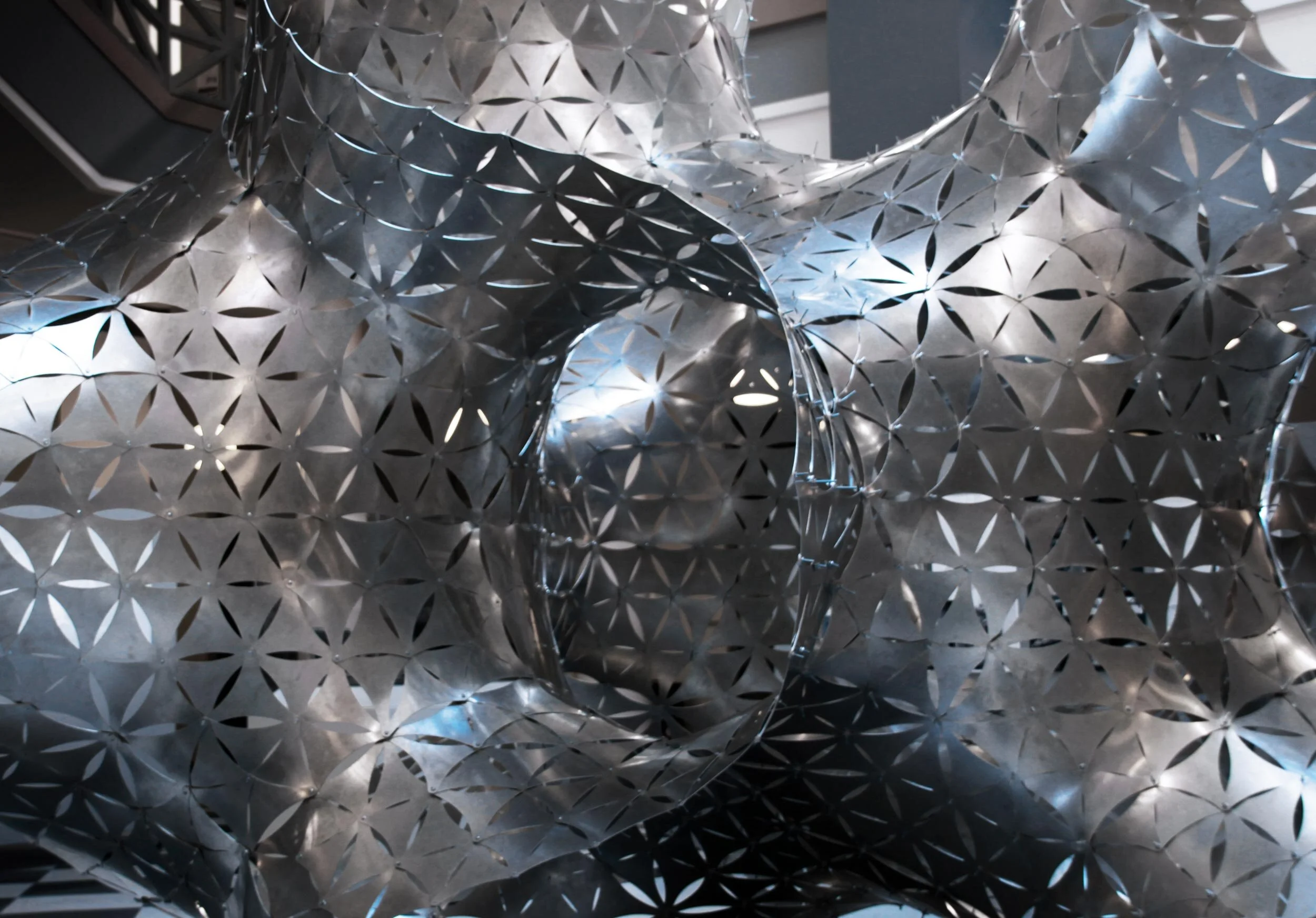
Minimal Complexity
HOUSTON 2011
MINIMAL COMPLEXITY HOUSTON 2011
In February 2011 the TEX-FAB team has finalised the construction of Minimal Complexity, the winning project of the REPEAT Competition 2010. The final assembled structure was situated in the atrium of the Gerald D. Hines College of Architecture building (designed by Phillip Johnson and John Burgee) of University of Houston. Composed of 2368 laser-cut 14 gauge aluminium pieces, the full scale model is almost 4m tall and was assembled in 120 man-hours.
TEX-FAB commissioned Minimal Complexity by sponsoring the REPEAT: Digital Fabrication Competition and partnered with Vlad Tenu as the fabrication consultants for the realisation of the project as it appears in the REPEAT Traveling Exhibition. The piece was captured as it was exhibited in Houston in the video below:
In line with the initial theme of the REPEAT competition, the assembly process proved to be very efficient due to the modularity and repetition of the sets of components. Following several prototypes with various configurations and at different scales, the final model was generated by only 16 different pieces multiplied 148 times, an optimum level of subdivision of the initial geometry sufficient for maintaining the curvature of the surface and keeping the fabrication process feasible.
STRUCTURAL ANALYSIS
A very detailed structural analysis provided by Buro Happold NY (Will Laufs, Erik Verboon) was done on the final geometry, both as a shell and as a beam structure as well as on the individual components. The Finite Element Method was essential in validating the potential stresses, deflections, frequencies and stability of the final piece. The Global Shell Model using iso-parametric finite shell elements has behaved very well under dead loading(DL), only two open end areas of the sculpture with locally cantilevering components have shown some measurable very small deflections – unlikely to be noticeable on site. The vibration analysis illustrates the inherent lowest natural frequencies, showing the preferred sculpture modes to swing.
The Global Beam Model was made using hinged beam elements lead to 3.1 mm Global DL Deflections, with very similar results as for the shell element model. Due to the difference in weight between the two models (271 kg for the shell model compared to 38 kg for the beam model), the natural frequencies show different results but with an overall low risk of vibration excitation. The individual component structural analysis leads to very good results as well, in terms of both material stresses and stability.
OPTIMISATION MODEL
Following a three week long collaborative conversation between London and Texas covering various design development issues and exchange of several revisions of the 3D model and laser-cutting files with the TEX-FAB team (Andrew Vrana, Brad Bell and Kevin McClellan), the construction of a half- scale model of Minimal Complexity was started in December 2010 in the Digital Fabrication Lab of the University of Texas Arlington.
The experience of the previous London prototype was useful for understanding the behaviour of the parts and planning the assembly process and for choosing the right materials and fixings . Realised by the UTA students, the model composed of 27 sub-assemblies consisted of over 2300 pieces (representing around 144 sets of 16) and reached a height of around 7 feet.
Assembly team: Janelle A. Brathewaite, Amy Brooks, Stephen Bundy, Naomi Contreras, Austin Fleming, Navid Tehrani, Rachel Kluger-Weston, Hai-Lin Yang.
FINAL ASSEMBLY
The 14 gauge aluminium components were cut by CROW Corporation on a 4000 Watt AMADA laser-cutter. After being cut , all the components (around 2400 pieces) were passed through an automatic tumbler in order to make the assembly a safer process and to give the material a better finish quality.
Several tests on tolerances and different types of fasteners were considering factors such as the overall weight of the final piece or the one of the separate sub-assemblies. The usage of ladders and special tools needed for the 1:1 scale model were all criteria that lead to a very specific order of the sequences of the whole assembly process. The team was lead by Thomas Behrman.
* Many thanks to everybody involved in the assembly process and especially to Andrew Vrana, Brad Bell and Kevin McClellan from TEX-FAB for the incredible efforts and excellent technical skills and support during the optimisation, testing and the final assembly process.
















